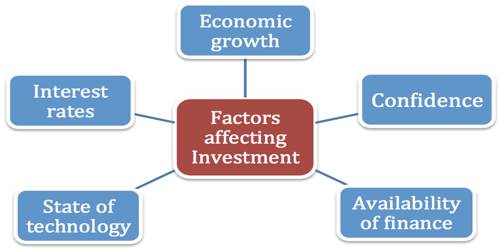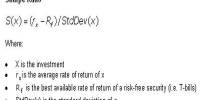Inventory investment is often a component of an uncouth domestic product. Precisely what is produced in a specific country is obviously also sold sooner or later, but some with the goods produced inside a given year may be sold in a new later year in lieu of in the year they were holding produced. In short, Inventory investment = production – sales.
Factors that affecting the Size of Investment in Inventories –
The size of investment in inventories is affected by a number of factors. Some of them are as follows:
(1) Level Of Safety Stock
If a firm maintains a high level of safety stock because of the relatively larger degree of uncertainty associated with production and sales, the size of investment in inventories is also higher. When the turnover rate is high, investment in inventories tends to be low.
(2) Carrying Costs
If the costs of holding inventories in stock are relatively low, the firm keeps larger stocks of inventories. There are certain costs of carrying stock. Some of these costs (storage costs, setup costs, change-over costs, ordering costs, spoilage and obsolescence costs) are directly measurable.
(3) Economy in Purchase
If the firm is likely to receive certain benefits in the form of cash discount for purchase made currently, the size of investment in inventories is also likely to be larger because of the larger quantity purchase. Therefore, every business firm likes to maintain a sufficient stock of raw materials to ensure uninterrupted production.
(4) Possibility Of Price Rise
If the price of materials is likely to rise in near future, the firm makes a larger quantity purchase at present. If a price rise is expected in the near future, the investment in raw material will be greater in a bid to keep the cost of product minimum.
(5) Cost And Availability Of Funds
If the cost of funds to be invested in inventories is relatively cheaper and they are conveniently available at present, the firm makes a large purchase of inventories. A financially sound company may buy materials in bulk and hold them for future use.
(6) Possibility Of Rising In Demand
If the firm has anticipated the increased demand for its products in future, it maintains larger stocks of inventories at present. The inventory policy and attitude of management also influence the inventory level.
(7) Length Of Production Cycle
If the length of the production cycle is relatively long, the firm has to maintain investment in work-in-progress inventories for a longer duration of time as a result of which the size of investment in inventories increases. Moreover, if the production process is of technical nature, even then it requires heavy investment in inventories.
(8) Availability Of Material
If certain kind of materials is only available in a particular season only, the firm has to increase the investment in inventories to keep larger stocks in the season. If the firm deals with the business of perishable products, the size of investment in inventories become lower. For a firm with relatively larger size and wide market coverage, the investment in inventories is larger.
Information Source:
















